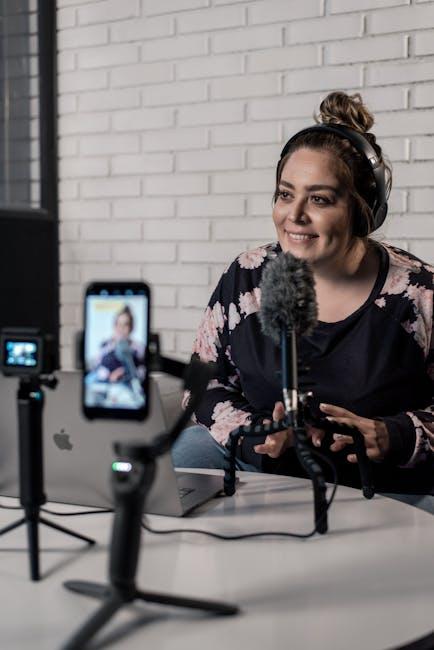Title: ?
In the rapidly evolving landscape of media consumption, the question of whether streaming services are rendering cable and satellite television obsolete has become a topic of significant discussion. As technological advancements continue to reshape how audiences access and engage with content, traditional TV providers face increasing competition from digital platforms offering on-demand and often more personalized viewing experiences. This article aims to explore the dynamics between these competing mediums, analyzing the trends that have led to the rise of streaming services and examining whether this shift signals an untimely decline for cable and satellite TV. By understanding the factors influencing consumer preferences and industry strategies, we can better assess the future of television in an era defined by digital innovation.
The Evolution of Viewing Habits Analyzing the Shift from Traditional to Digital Platforms
In recent years, the landscape of television consumption has undergone a significant transformation, with audiences increasingly gravitating towards digital platforms. This shift is driven by a combination of technological advancements, changing consumer preferences, and the rise of on-demand content. Traditional cable and satellite TV are being challenged by the flexibility and convenience that streaming services offer. Consumers now enjoy the ability to watch their favorite shows and movies anytime, anywhere, and on any device, which has led to a decline in traditional TV subscriptions.
- Accessibility: Streaming platforms provide content across multiple devices, from smartphones to smart TVs, enhancing viewer accessibility.
- Cost-Effectiveness: Many streaming services offer a range of subscription plans, often cheaper than traditional TV packages.
- Content Variety: A vast library of shows, movies, and original content caters to diverse audience interests, unlike the limited offerings of cable channels.
- Personalization: Algorithms curate content recommendations based on viewing history, providing a tailored entertainment experience.
While traditional TV still holds value for live events and news, the momentum of streaming is undeniable, suggesting that the era of cable and satellite dominance may be waning sooner than expected. This evolution in viewing habits signifies not just a change in how content is consumed, but also a shift in the entire media ecosystem.

Understanding Consumer Preferences in the Age of Streaming Services
The rise of streaming services has dramatically reshaped how consumers engage with media content, prompting a shift away from traditional cable and satellite TV. Personalization stands out as a key factor driving this transition. Streaming platforms offer tailored recommendations based on viewing history, allowing users to discover content that aligns with their unique tastes. This level of customization is something traditional TV struggles to match. Moreover, flexibility in viewing schedules—unrestricted by time slots—empowers viewers to watch their favorite shows whenever they please, further appealing to the on-demand culture of today.
Additionally, the cost-effectiveness of streaming subscriptions compared to hefty cable bills attracts budget-conscious consumers. For a fraction of the cost, users gain access to a vast library of movies, series, and exclusive originals. Another appealing aspect is the ad-free experience offered by many streaming services, which contrasts sharply with the frequent commercial interruptions on cable TV. These factors, combined with the ability to watch content on multiple devices, from smart TVs to smartphones, underline why streaming is swiftly becoming the preferred choice for many.
- Personalized Content: Custom recommendations enhance user engagement.
- Viewing Flexibility: Watch anytime, anywhere without restrictions.
- Cost Efficiency: More affordable than traditional cable packages.
- Ad-Free Options: A seamless viewing experience without interruptions.
- Multi-Device Access: Compatibility across various gadgets and platforms.

Evaluating the Economic Impact of Streaming on Cable and Satellite Providers
The rise of streaming services has significantly altered the landscape of traditional television, posing challenges for cable and satellite providers. The economic impact is multifaceted, affecting revenue models, subscriber bases, and content delivery methods. One of the primary effects is the decline in subscriber numbers, as consumers increasingly opt for the flexibility and variety offered by streaming platforms. This shift has forced traditional providers to rethink their strategies, often leading to partnerships with or the creation of their own streaming services to remain competitive.
Several key factors contribute to this economic shift:
- Consumer Preferences: Viewers are drawn to the on-demand nature of streaming, which offers personalized content at any time, without the constraints of scheduled programming.
- Cost Efficiency: Streaming services often provide more cost-effective solutions compared to traditional cable packages, which can be expensive and filled with channels that users may never watch.
- Technological Advancements: With the advent of smart TVs and faster internet speeds, accessing streaming content has become more convenient, further encouraging the migration from cable and satellite.
While cable and satellite providers are not entirely obsolete yet, they must continue to innovate and adapt to these changing dynamics to sustain their relevance in a rapidly evolving market.
Strategic Recommendations for Cable and Satellite TV to Compete in a Streaming-Dominated Market
To thrive in a market increasingly dominated by streaming services, cable and satellite TV providers must adopt innovative strategies that leverage their unique strengths while addressing consumer demands. Enhancing Content Variety is crucial; providers should consider forming partnerships with content creators to offer exclusive programming that is not available on streaming platforms. This can include live sports, news, and original content that can attract niche audiences.
- Integrate Streaming Services: By incorporating popular streaming platforms into their packages, cable and satellite providers can offer a hybrid solution that appeals to a broader audience.
- Flexible Pricing Models: Introducing customizable subscription plans that allow consumers to pick and choose channels or services can make traditional TV more appealing.
- Enhanced User Experience: Investing in technology to improve user interfaces and customer service can provide a seamless viewing experience that rivals streaming services.
- Community Engagement: Localized content and community-focused programming can help maintain a loyal customer base by offering something unique that streaming services may overlook.
By reimagining their service offerings and focusing on customer-centric innovations, cable and satellite TV providers can create a competitive edge in the rapidly evolving entertainment landscape.







































